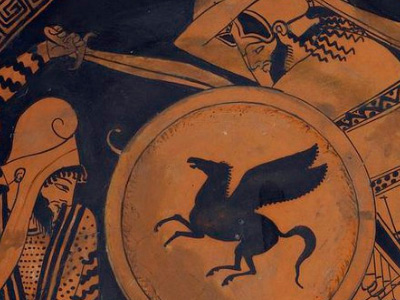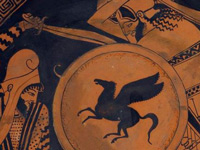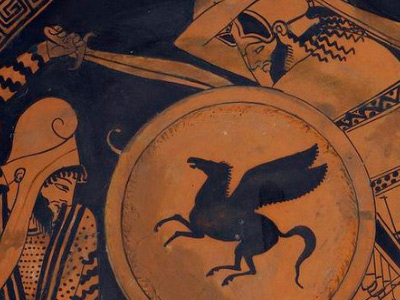Battle of Plataea (479 BC)

Opposing Forces
Greeks
According to Herodotus, the Spartans sent 45,000 men – 5,000 Spartiates (full citizen soldiers), 5,000 other Lacodaemonian hoplites (perioeci) and 35,000 helots (seven per Spartiate). This was probably the largest Spartan force ever assembled. The Greek army had been reinforced by contingents of hoplites from the other Allied city-states. Diodorus Siculus claims in his Bibliotheca historica that the number of the Greek troops approached one hundred thousand.
According to Herodotus, there were a total of 69,500 lightly armed troops – 35,000 helots and 34,500 troops from the rest of Greece; roughly one per hoplite. The number of 34,500 has been suggested to represent one light skirmisher supporting each non-Spartan hoplite (33,700), together with 800 Athenian archers, whose presence in the battle Herodotus later notes. Herodotus tells us that there were also 1,800 Thespians (but does not say how they were equipped), giving a total strength of 108,200 men.
The number of hoplites is accepted as reasonable (and possible); the Athenians alone had fielded 10,000 hoplites at the Battle of Marathon. Some historians have accepted the number of light troops and used them as a population census of Greece at the time. Certainly these numbers are theoretically possible. Athens, for instance, allegedly fielded a fleet of 180 triremes at Salamis, manned by approximately 36,000 rowers and fighters. Thus 69,500 light troops could easily have been sent to Plataea. Nevertheless, the number of light troops is often rejected as exaggerated, especially in view of the ratio of seven helots to one Spartiate. For instance, Lazenby accepts that hoplites from other Greek cities might have been accompanied by one lightly armoured retainer each, but rejects the number of seven helots per Spartiate. He further speculates that each Spartiate was accompanied by one armed helot, and that the remaining helots were employed in the logistical effort, transporting food for the army. Both Lazenby and Holland deem the lightly armed troops, whatever their number, as essentially irrelevant to the outcome of battle.
A further complication is that a certain proportion of the Allied manpower was needed to man the fleet, which amounted to at least 110 triremes, and thus approximately 22,000 men. Since the Battle of Mycale was fought at least near-simultaneously with the Battle of Plataea, then this was a pool of manpower which could not have contributed to Plataea, and further reduces the likelihood that 110,000 Greeks assembled before Plataea.
The Greek forces were, as agreed by the Allied congress, under the overall command of Spartan royalty in the person of Pausanias, who was the regent for Leonidas' young son, Pleistarchus, his cousin. Diodorus tells us that the Athenian contingent was under the command of Aristides; it is probable that the other contingents also had their leaders. Herodotus tells us in several places that the Greeks held council during the prelude to the battle, implying that decisions were consensual and that Pausanias did not have the authority to issue direct orders to the other contingents. This style of leadership contributed to the way events unfolded during the battle itself. For instance, in the period immediately before the battle, Pausanias was unable to order the Athenians to join up with his forces, and thus the Greeks fought the battle completely separated from each other.
Persians
According to Herodotus, the Persians numbered 300,000 and were accompanied by troops from Greek city states that supported the Persian cause (including Thebes). Herodotus admits that no one counted the latter, but he guesses that there were about 50,000 of them. Mardonius' troops consisted of not only Persians and Medes, but also Bactrians, Scythians, Indians, Boeotians, Locrians, Malians, Thessalians, Macedonians, Thracians, and 1,000 Phocians.
Ctesias, who wrote a history of Persia based on Persian archives, claimed there were 120,000 Persian and 7,000 Greek soldiers, but his account is generally garbled (for instance, placing this battle before Salamis, he also says there were only 300 Spartans, 1000 perioeci and 6000 from the other cities at Plataea, perhaps confusing it with Thermopylae).
Diodorus Siculus claims in his Bibliotheca historica that the number of the Persian troops was some five hundred thousand.
The figure of 300,000 has been doubted, along with many of Herodotus' numbers, by many historians; modern consensus estimates the total number of troops for the Persian invasion at around 250,000. According to this consensus, Herodotus' 300,000 Persians at Plataea would self-evidently be impossible. One approach to estimating the size of the Persian army has been to estimate how many men might feasibly have been accommodated within the Persian camp; this approach gives figures of between 70,000 and 120,000 men. Lazenby, for instance, by comparison with later Roman military camps, calculates the number of troops at 70,000, including 10,000 cavalry. Meanwhile, Connolly derives a number of 120,000 from the same-sized camp. Indeed, most estimates for the total Persian force are generally in this range. For instance, Delbrück, based on the distance the Persians marched in a day when Athens was attacked, concluded that 75,000 was the upper limit for the size of the Persian army, including the supply personnel and other non-combatants. In his battle account of Plataea, Delbrück estimated the Persian army, including allied Greeks, as amounting to 40,000.
HISTORY

RESOURCES
This article uses material from the Wikipedia article "Battle of Plataea (479 BC)", which is released under the Creative Commons Attribution-Share-Alike License 3.0.
© Stories Preschool. All Rights Reserved.









